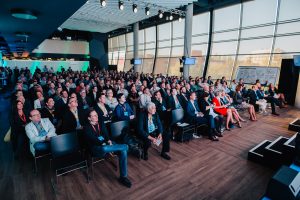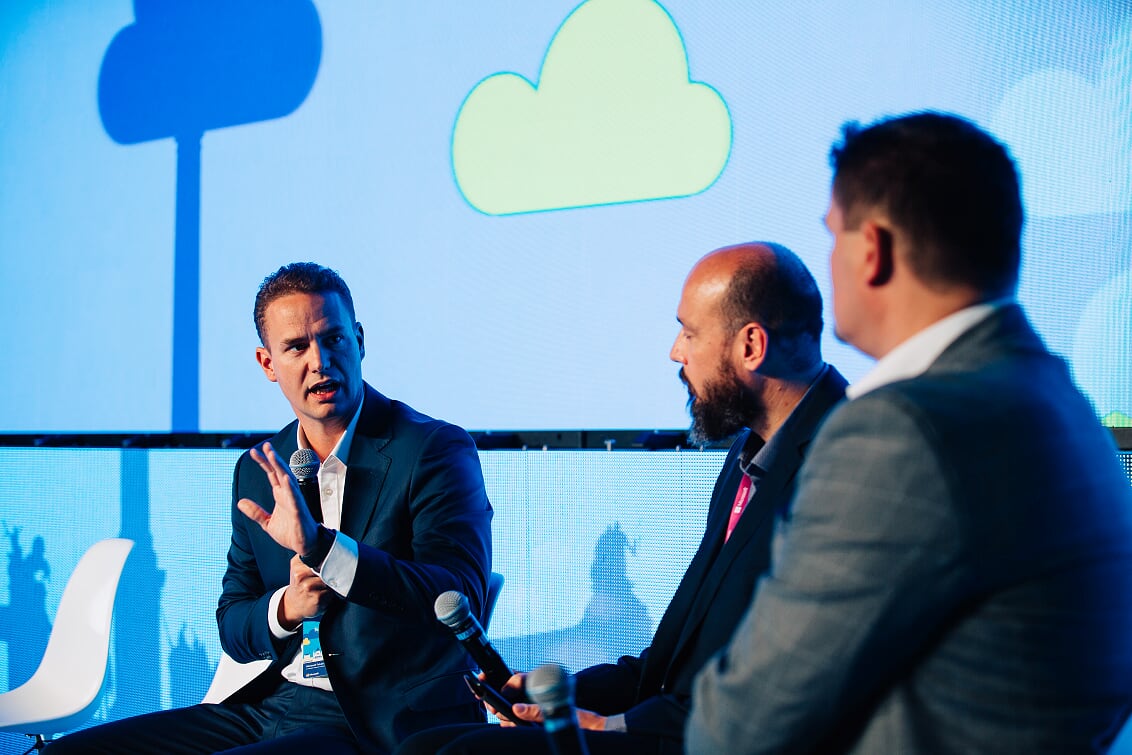Although it didn’t start so long ago, MOL’s digital transformation already has a great deal to teach us. The most important of these lessons is perhaps that it has no chance of succeeding without the support of the senior management.
“MOL is in a lucky position,” said András Svébis, CIO of MOL Hungary, at the Microsoft Future Decoded conference. That is because the company’s long-term strategy approved two years ago, “MOL 2030” also includes the expectations related to digital transformation—so the demands of the senior management were luckily in line with the endeavours of IT.
Another exceptionally important lesson is that the introduction of technologies is only the smaller, and easier, part of the transformation. What is much more difficult to achieve is getting people to want to use and be capable of using the newly developed opportunities, because if this doesn’t happen, then not even the technology will help the organisation take advantage of the benefits of digital transformation. Consequentially, the first step should be to focus on the digital transformation of the employees, and when they are ready to use the new solutions, it will be worthwhile focusing on the transformation of the processes and customer relations.
 This year at MOL Hungary saw the first step of the employee transformation process: this was the first phase of the Go-On Digital (GOOD) program. “The program consists of four main elements,” explained András Svébis. We needed a platform through which everyday work is made simpler and more efficient – this was Microsoft Office 365. Secondly, there was the need for devices that employees could use to access this platform. So, to date, 4400 iPhones were distributed, both to office and physical workers, and Office 365 was installed on 3300 PCs. According to the CIO the reason it was not possible to install Office 365 on the other 2000 computers is a bit surprising: about this number of employees did not log out of their computers even once over the course of three months.
This year at MOL Hungary saw the first step of the employee transformation process: this was the first phase of the Go-On Digital (GOOD) program. “The program consists of four main elements,” explained András Svébis. We needed a platform through which everyday work is made simpler and more efficient – this was Microsoft Office 365. Secondly, there was the need for devices that employees could use to access this platform. So, to date, 4400 iPhones were distributed, both to office and physical workers, and Office 365 was installed on 3300 PCs. According to the CIO the reason it was not possible to install Office 365 on the other 2000 computers is a bit surprising: about this number of employees did not log out of their computers even once over the course of three months.
The third important element of the GOOD program consisted of internally developed applications. They wanted to give people apps that they would be glad to use and so get them involved in the digital world. For example, one of the apps tells the workers when the company bus that takes them to work is due to arrive, and another tells them what’s for lunch—saving them a 20-minute walk sometimes. Finally, it was also ensured that the devices could access the net from anywhere, anytime: Wi-Fi networks were installed at the MOL sites, and unlimited mobile internet access was provided on 9200 company mobile phones.
“The team running the GOOD project gained valuable experience from it,” added András Svébis. One of the most important considerations is that a change of this scale cannot be implemented by IT as part of their business-as-usual activities—separate resources have to be provided for it, and it has to be treated as a project. The actual needs of employees must be checked again and again, because it could quite easily happen that they see the same thing in quite a different way: what is 6 from here could be 9 from the other side. It also turned out that in addition to the support of the senior management, there is also the need for intensive communication inside the company so that everyone, on every level, understands precisely what the program is and what its objective is. “If you ask Zsolt Hernádi to name a MOL IT project, he is almost sure to think of the GOOD project,” said the CIO about its success.
In the next phase we want to extend the project to MOL’s foreign subsidiaries. Another important goal is to promote widespread adoption of the platform which is shown by the adoption dashboard created for this purpose. In the future a key metric of the success of IT will be the extent of usage of the new technologies. Dedicated campaigns will be launched to promote adoption of certain tools and solutions, such as OneDrive, which is currently not being used by employees to the extent of Teams or Skype.
For Hungarian version please click the link below:
https://news.microsoft.com/hu-hu/2018/11/28/a-digitalis-transzformacio-a-dolgozoknal-kezdodik/

